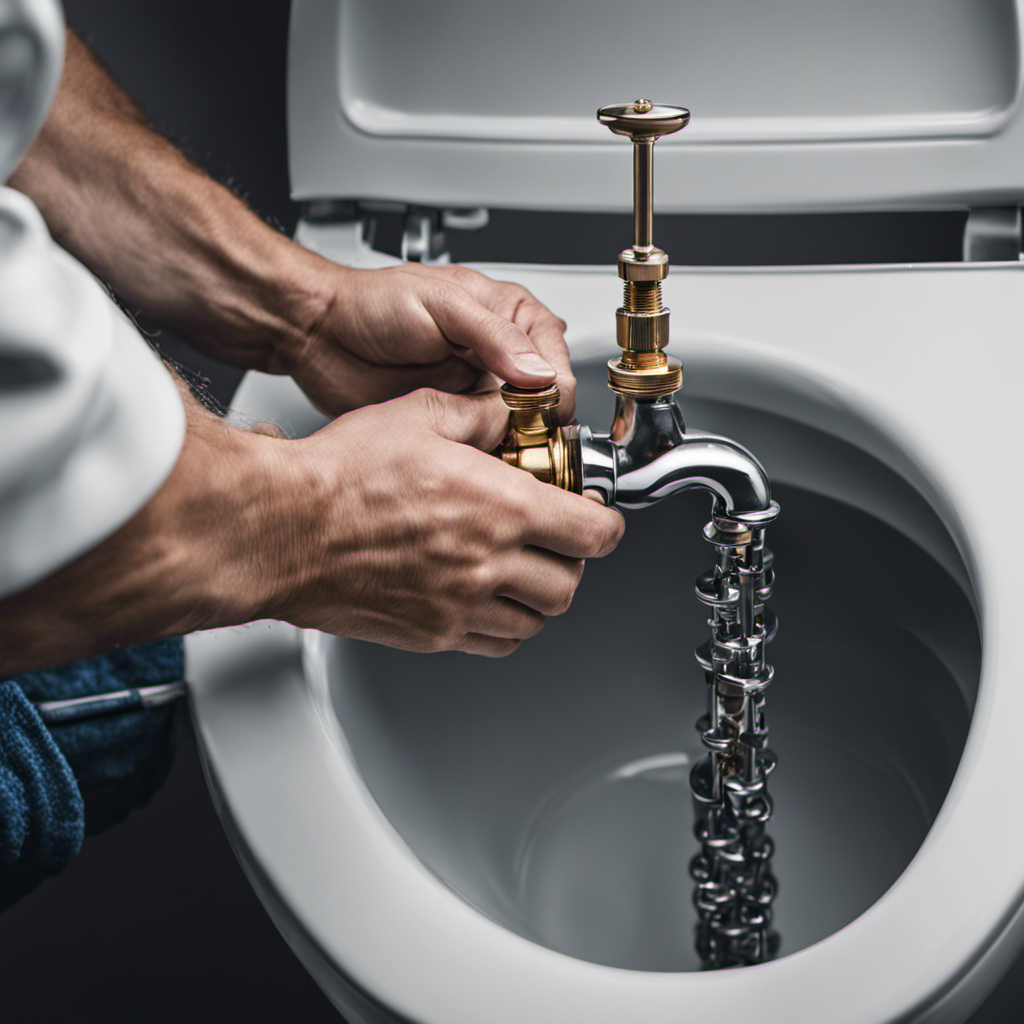I’ve always found it frustrating when my toilet doesn’t flush properly. It’s just one of those things that can really disrupt your day.
But fear not, because I’ve got some great tips to share on how to make your toilet flush better. In this article, we’ll dive into the mechanics of a toilet flush, identify common problems, and provide simple DIY fixes.
We’ll even explore how upgrading your toilet can improve flushing performance. Plus, I’ll share some maintenance tips to keep your toilet flushing efficiently.
So, let’s get started and say goodbye to weak flushes for good!
Key Takeaways
- Understanding the mechanics of a toilet flush is crucial for identifying and resolving issues with the flush system.
- Common problems with toilet flushing include weak flushes, faulty flapper valves, and insufficient water levels in the tank.
- Simple DIY fixes for a weak toilet flush include adjusting the water level in the tank and replacing a worn-out flapper valve.
- Upgrading the components of your toilet, such as the flush valve, flapper, or fill valve, can greatly improve flushing performance.
Understanding the Mechanics of a Toilet Flush
To understand why your toilet isn’t flushing properly, you’ll need to know how the mechanics of a toilet flush work.
The toilet flush mechanism consists of several key components that work together to create a powerful flush. When you press the flush handle, a chain or rod connected to the flush valve is lifted, allowing water to flow from the tank into the bowl. The force of the water creates a siphon effect, which pulls waste and water out of the bowl and into the drainpipe.
If your toilet isn’t flushing properly, there are a few common troubleshooting steps you can take.
First, check that the chain or rod is properly connected to the flush valve. If it’s too loose or too tight, it can affect the flush.
Additionally, make sure the water level in the tank is sufficient. If it’s too low, it may not provide enough pressure for a strong flush.
Identifying Common Problems With Toilet Flushing
Are you experiencing any issues with your toilet’s flushing system? If so, I can help you troubleshoot and improve the flush power.
One common problem is a weak flush, which may be caused by a clogged or obstructed toilet drain. To fix this, start by using a plunger to dislodge any blockage. If that doesn’t work, you may need to use a toilet auger to remove the obstruction.
Another issue could be a faulty flapper valve, which can cause water to leak into the bowl and reduce the flushing power. In this case, simply replace the flapper valve with a new one.
Additionally, check the water level in the tank and adjust it if necessary to ensure proper flushing.
Simple DIY Fixes for a Weak Toilet Flush
If you’re experiencing a weak flush, one simple DIY fix is to check the water level in the tank. Sometimes, a low water level can prevent the toilet from flushing properly. Here’s what you can do to fix it:
-
Check the water level: Lift the lid of the toilet tank and take a look at the water level. It should be about an inch below the top of the overflow tube.
-
Adjust the water level: If the water level is too low, you can adjust it by turning the water supply valve clockwise to decrease the water level or counterclockwise to increase it.
-
Replace the flapper: If the water level is fine, but you still have a weak flush, the flapper might be the culprit. A worn-out or damaged flapper can cause water to leak from the tank, leading to a weak flush. You can easily replace the flapper by following the manufacturer’s instructions.
Taking these simple steps can help improve your toilet’s flush and ensure proper functionality.
Upgrading Your Toilet for Better Flushing Performance
One way to enhance your toilet’s flushing performance is by upgrading its components.
Upgrading your toilet can significantly improve its flushing efficiency and prevent common issues like clogs and weak flushes.
To achieve this, you can consider installing a new flush valve, flapper, or fill valve. These components are responsible for controlling the water flow and ensuring a strong flush.
A professional toilet flush installation can ensure that these upgrades are done correctly and effectively. They have the expertise to assess your toilet’s current condition and recommend the best upgrades for optimal performance.
Additionally, a professional installation can save you time and effort, as they have the necessary tools and knowledge to complete the job efficiently. Trusting a professional for your toilet flush upgrades can result in a more efficient and powerful flush, giving you peace of mind and a better overall bathroom experience.
Maintenance Tips to Keep Your Toilet Flushing Efficiently
Regularly cleaning and clearing any debris from your toilet’s components, such as the flush valve and flapper, can help ensure efficient flushing. Here are some maintenance tips to keep your toilet flushing efficiently:
-
Clean the flush valve and flapper: Remove any buildup or residue that may be affecting their functionality. A thorough cleaning will improve water flow and prevent clogs.
-
Adjust water pressure: Check the water supply valve behind your toilet and ensure it is fully open. If the water pressure is too low, it can lead to weak flushing. Adjusting the water pressure can help improve the flushing power.
-
Inspect and replace faulty parts: Over time, parts like the fill valve or the flush handle may wear out or become defective. Inspect these components regularly and replace them if necessary to maintain optimal flushing performance.
Conclusion
In conclusion, taking the time to understand the mechanics of your toilet flush and identifying common problems can greatly improve its performance.
By implementing simple DIY fixes, like adjusting the water level or cleaning the rim jets, you can optimize flushing efficiency.
If you’re looking for a more permanent solution, consider upgrading your toilet to a high-pressure or dual-flush model.
Remember to regularly maintain your toilet by cleaning the tank and checking for any leaks.
With these tips, your toilet will flush with the force of a raging river, leaving you with a clean and efficient bathroom experience.










